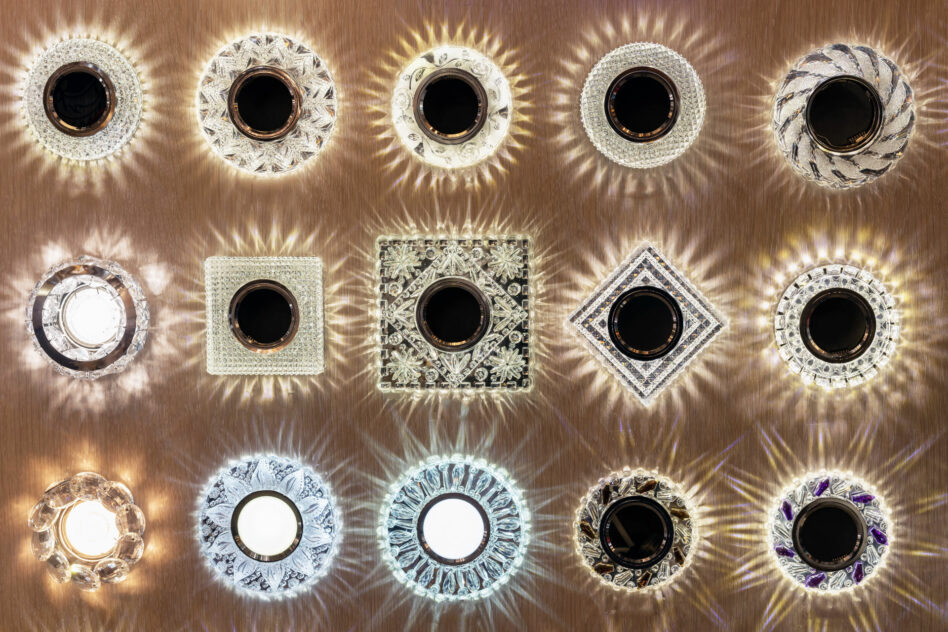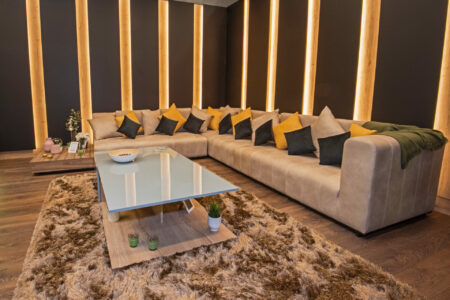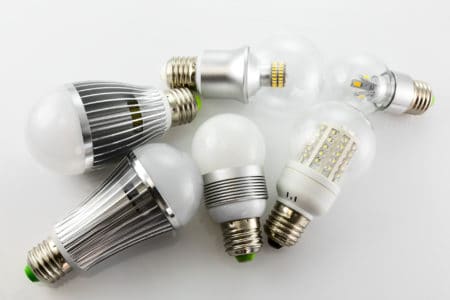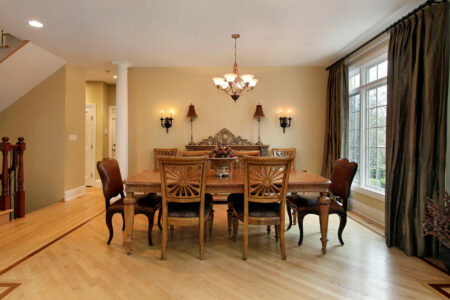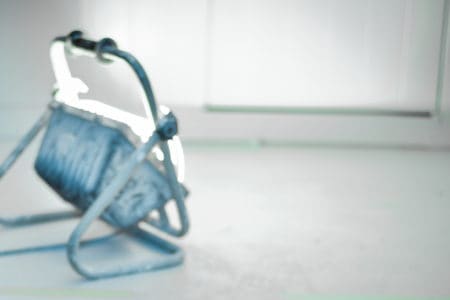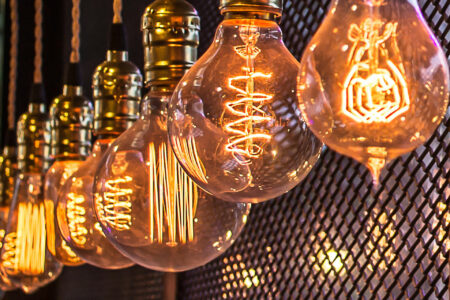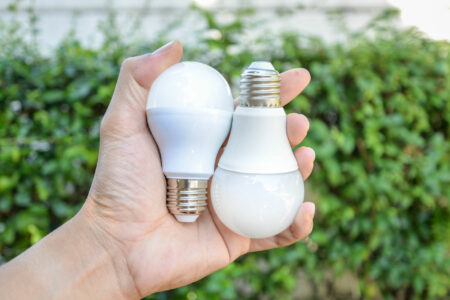There are nine main types of recessed lighting trims available. They are adjustable, baffle, decorative, open, pinhole, reflector, shower, slotted, and wall-washer trims. Each has a specific function and comes in various designs, allowing you to create the perfect lighting solution.
Nine Types Of Recessed Lighting Trims
The trim on a recessed housing unit is not only for decorative purposes but for practical purposes, too. Each type of trim has its advantages and disadvantages, which should be considered when deciding.
The nine most widely-used types of trim used for recessed lighting are discussed in further detail next.
1. Adjustable Trim For Recessed Lighting
If you’re looking for recessed lights that can be moved according to different needs then adjustable lights are for you. The benefit of adjustable trim is that you can easily reposition the recessed light where you’d like it to shine.
It can tilt up to 70° and rotate as much as 359°. It is commonly used for accent lighting, which can be directed to shine on objects you’d like to highlight in a room.
Some examples where you’d use adjustable trim on your recessed lights include:
- Highlighting art or architectural structures in a room,
- Creating a wall-wash effect, and
- Illuminating shelves of cabinets.
Adjustable trims conveniently come with a few options, like eyeball, adjustable cone, eyelid, gimbal ring, and wall wash (which will be discussed separately). You might also hear people referring to adjustable trim as elbow or scoop trim.
Eyeball trim is an adjustable trim that uses the same exterior trim of open and baffle trim. Its range of movement includes up to 30° tilt and 359° rotation. Eyeball trim can risk looking tacky since so much trim is visible, so it’s wise to select a color that will complement the room’s decor.
Gimbal ring trim is similar to eyeball trim; however, the bulb is further back into the housing unit. It has a similar range to eyeball trim, but some light shafts will be cut off if tilted at full range.
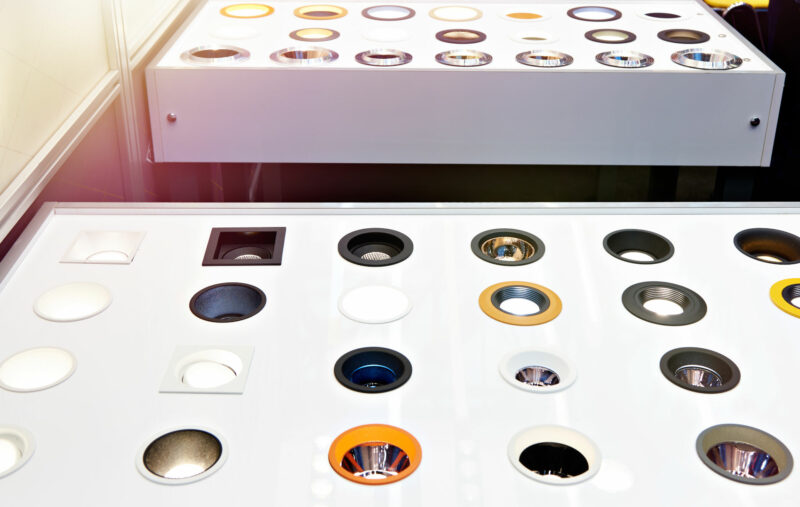
2. Baffle Trim For Recessed Lighting
Baffle trim is one of the more commonly used trims for ambient recessed lighting in bedrooms, living spaces, and entryways. It’s called baffle trim because of the inset grooves which block excessive light due to absorption. Baffle trim is designed to reduce glare and shadows while aiding concentration.
If you want to reduce glare even more, you can use dark baffle trim, like black or brown. However, if you’d prefer the trim to match your ceiling, white is a better bet. Regardless of its color, baffle trim is simple and almost flush with the ceiling, allowing for a minimalist look.
3. Decorative Trim For Recessed Lighting
Decorative trim creates a visual interest around recessed lighting that meets your aesthetic preferences. There are many options for decorative trim, including contemporary and classic options. They are usually constructed from metal and glass.
4. Open Trim For Recessed Lighting
Open trim looks like baffle trim, except it doesn’t have the ribbed interior to absorb excess light or glare. This means recessed lights with open trim will provide unobstructed, brighter lighting. To enhance the light’s brightness, you can use lighter-colored trim, e.g., white.
The silhouette of open trim is low-profile, positioning the light bulb almost flush with the ceiling. Additionally, using open trims for your recessed lighting is more economical than most other trims.
5. Pinhole Trim For Recessed Lighting
Pinhole trim is generally thicker and has a tiny opening to channel all the light into a narrow beam. The aperture of a pinhole trim fits snugly around the light bulb, giving it a minimalistic and cold look. This type of trim is ideal for highlighting architectural detail or a decorative piece.
6. Reflector Trim For Recessed Lighting
Reflector trim has the opposite effect of baffle trim because it uses a reflective sheen instead of dark ribbing. The concept is similar to that of a car’s headlights, except it’s in a recessed light fitting. The mirror finish around the light reflects the light and amplifies its luminosity.
The best places to use reflector trim for recessed housing are in large living areas and spaces where you need a lot of light.
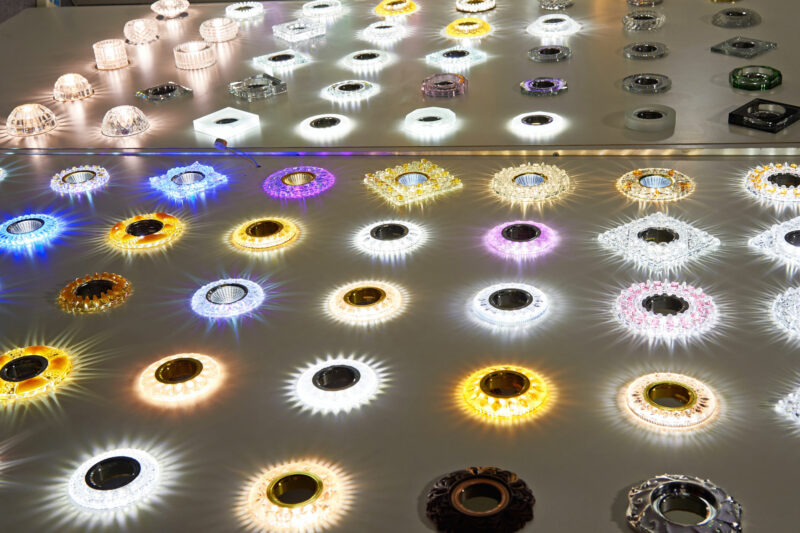
7. Shower Trim For Recessed Lighting
Shower trim, as its name implies, is ideal for places with high humidity. Another name for shower trim is a lens trim because it’s covered with a layer of tempered glass to protect the light bulb and casing from moisture. They are ideal for use in bathrooms, showers, and other high-humidity areas.
When deciding on a shower trim, it’s a good idea to see if it is listed for damp or wet conditions. These terms indicate whether the trim is water-resistant or waterproof, respectively. For example, wet shower trims would be good in a sauna or walk-in shower. On the other hand, damp trims can be used in lower-humidity spaces.
8. Slotted Trim For Recessed Lighting
Slotted trim is similar to pinhole trim, except the aperture is more oval-shaped. It is used to create a spotlight effect in accent lighting because of its concentrated narrow beam. Recessed lights with a slotted trim can tilt up to 35° and rotate 179°.
Recessed lights with slotted trim do not lie flush with the surface on which they are mounted. Instead, the trim protrudes a bit because it is thicker. As a result, the trim conceals most of the light source and looks modern and minimalistic.
9. Wall-Washer Trim For Recessed Lighting
Finally, wall-washer trim can be likened to a mix of baffle, open, and eyeball trim. It doesn’t employ ribbing like baffle trim, but the exterior trim is similar. Inside the trim is an adjustable light fixture that partially covers the opening, as an eyelid would.
The half-shield “eyelid” aids the even glow of the recessed light’s illumination onto a specific feature or item you wish to highlight. As the name suggests, wall-washer trim is ideal for wall washing and other accent lighting. In addition, the shield helps to eliminate the “scalloped” look typically created when shining a light directly at a wall.
Considerations When Choosing The Perfect Trim
Before selecting the trim for your recessed lights, it’s a good idea to jot down the purpose, position, and conditions of the recessed light and its trim. You will also need to select the trim according to the overall style and decor of the room.
Below are some points to consider before purchasing your recessed light housing, bulbs, and trim:
- Ensure the trim and housing you want to use are compatible. Ask an ALA- (American Lighting Association) registered technician for advice if you need more clarification.
- A flangeless trim will fit seamlessly with the surface on which it is mounted. However, a flanged trim will stick out a bit, looking more prominent.
- For a modern look, choose a trim with a square aperture. A rounded aperture will look more classical.
- Beveled trim creates depth, while a flat trim is more minimalistic.
- Use adjustable trims for sloped ceilings. Otherwise, rather stick to fixed trims.
- Decide whether you want to use plastic or metal trims. Different plastic trims exist for casual and up-market aesthetics and are more cost-effective. Metal trim will be more costly but is durable and modern-looking. Stainless steel trim is durable, and aluminum trim is lightweight.
- Black or white baffle trim is usually the cheapest trim for recessed lighting.
- The color of the trim will affect the light’s output. For example, dark-colored trims can absorb up to as much as 44% of the light output.
